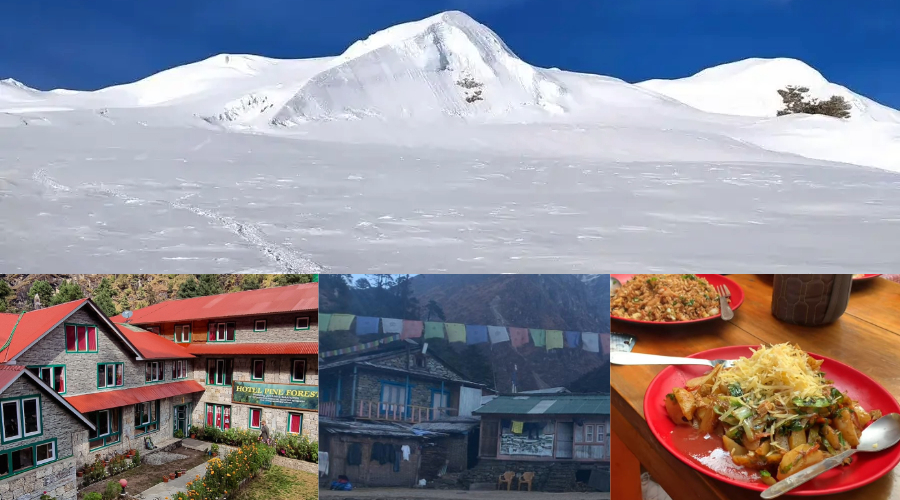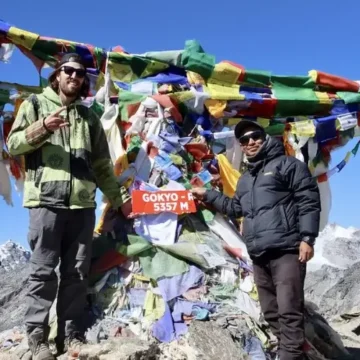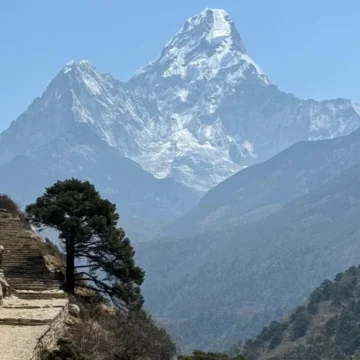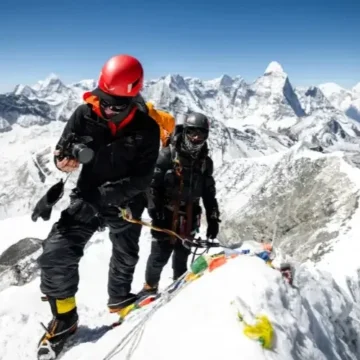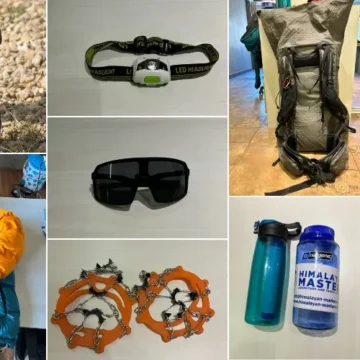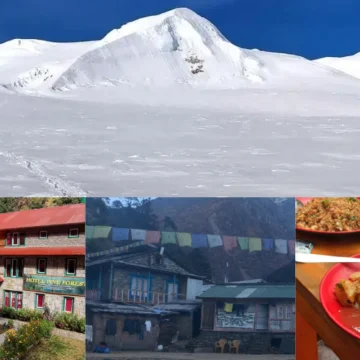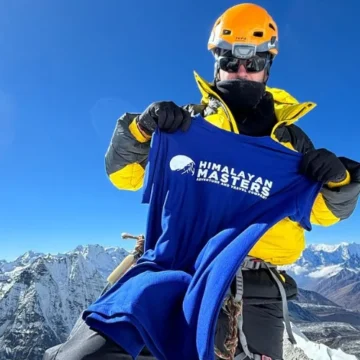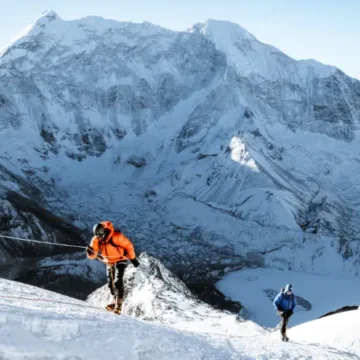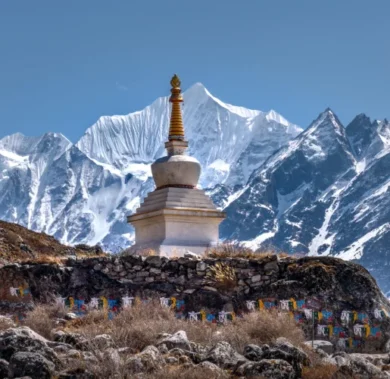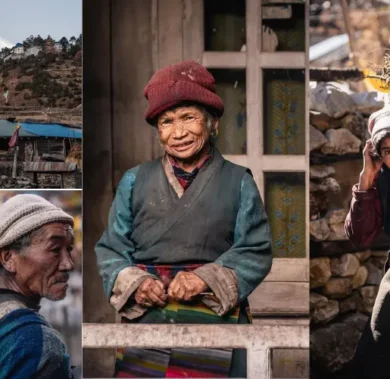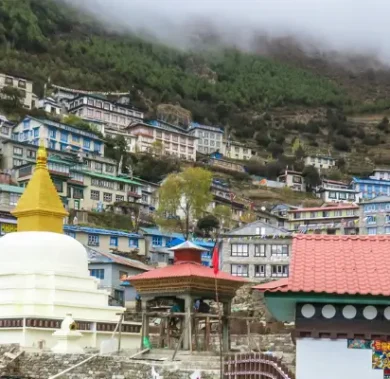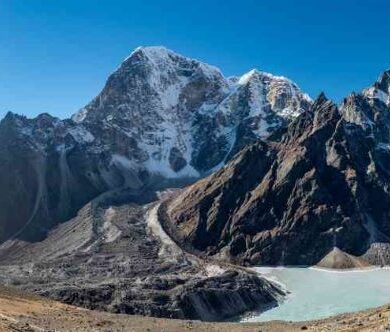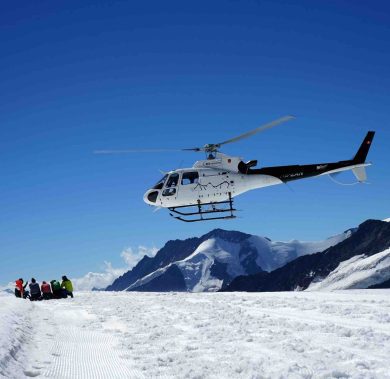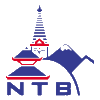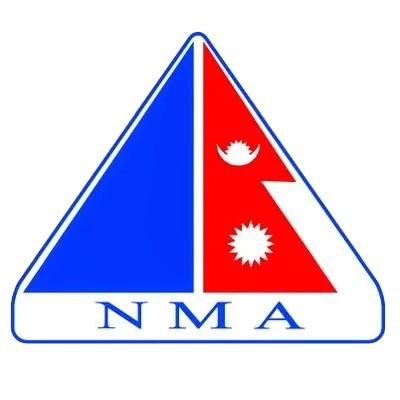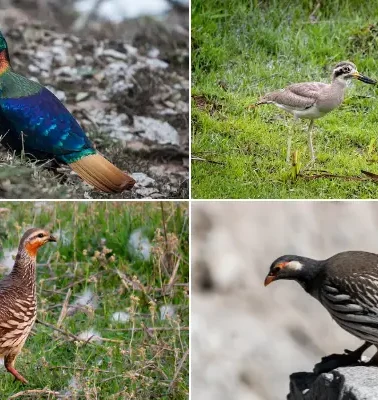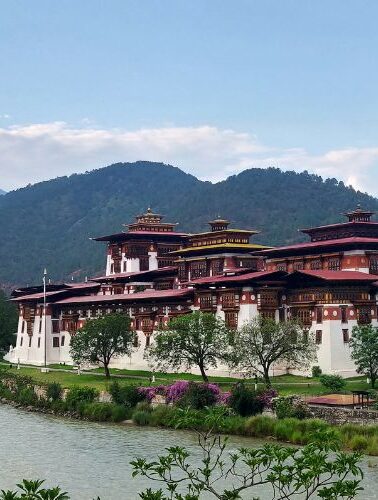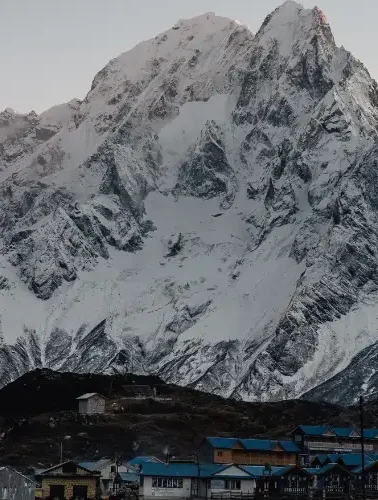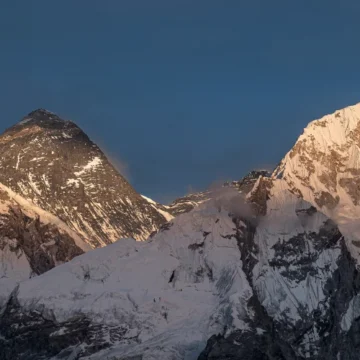
Exclusive Guide to Mera Peak Lodges, Meal and Water
Table of Contents
Mera Peak is one of Nepal’s most famous trekking peaks and attracts tourists worldwide. When planning your trip, selecting a proper lodging is one of the most vital steps towards the success of the climbing trip. Even though Mera Peak lodges and meal might not be the best, you will get to see one of the best views of the Mera Peak and the region.
Accommodations during the Mera Peak climb can be in teahouses, which are simple lodges owned by the local people, most of whom are women. Such tea houses provide a touch of comfort after you have spent several hours trekking.
Knowing what Mera Peak lodges and meal you will find at each point will make organizing your travel more accessible, so it’s also essential here.
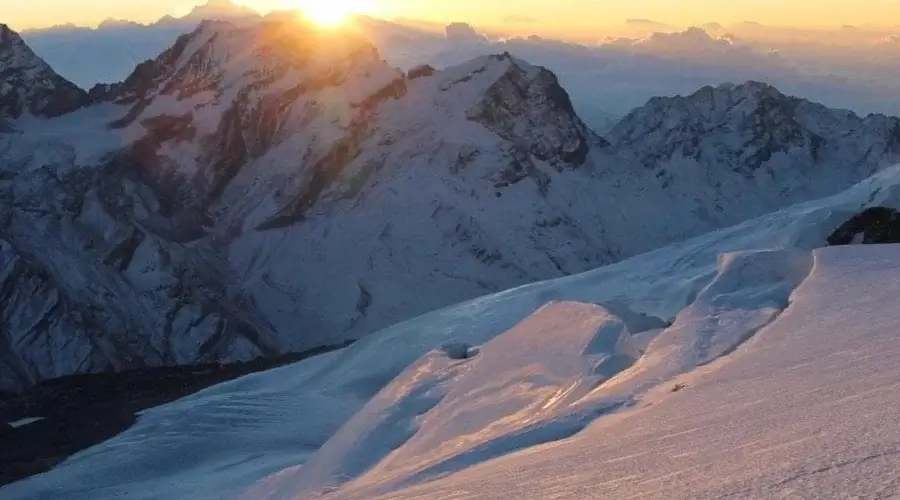
Accommodation Overview at Mera Peak Climbing
Kathmandu | with more or less facilities
Kathmandu, Nepal’s colour capital city, will be the gateway to most trekking destinations, such as Mera Peak. Finding a hotel in Thamel is preferable because of its busy nightlife and closeness to shops, restaurants, and trekking companies.
Most of the hotels in this region are trekker’s hotels where trekkers can get standard accommodation with more or less facilities to make their stay a little more comfortable.
Almost all the facilities offer complimentary internet use, hot showers, round-the-clock electricity, and dining facilities. Kathmandu has every type of hotel you can imagine.
Chhuthang | standard rooms with few amenities
When you leave Kathmandu and fly to Lukla, a trek up to Chhuthang, which stands at an altitude of roughly 3000m, will start. Chhuthang is a small and composite village with no facilities other than a few local tea houses for accommodation. Cultural activity is essential for these tea houses; they may comprise standard rooms with few amenities.
There is a general need for more facilities, but trekkers can expect a friendly reception from staff who are fully aware of the climbers’ requirements. Wi-Fi is frequently absent, and though some tea houses might occasionally provide electricity based on solar panels, these are also sparse.
You can even get a hot shower, but you will need to pay an extra charge for it.
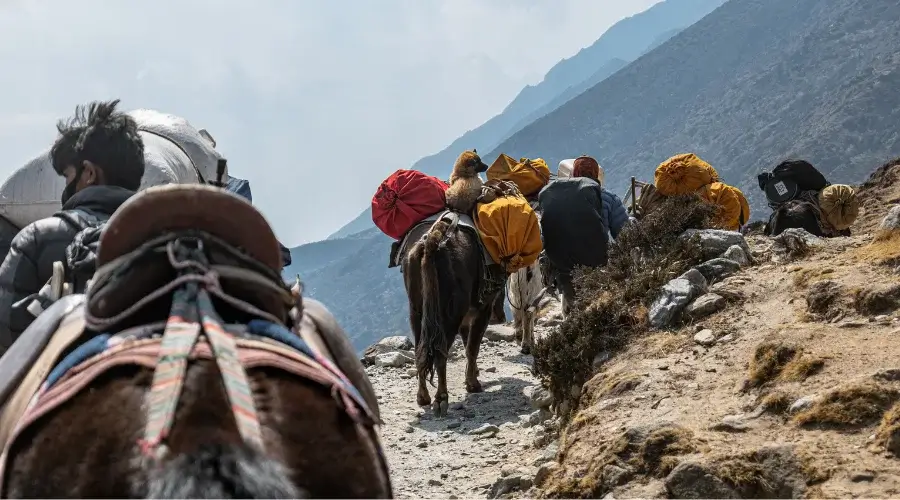
Chatrabuk | simple and basic tea houses
Then, you will stay in Chatrabuk, which is comparatively positioned at approximately 3,200 meters above sea level. The village has only several simple tea houses to accommodate the trekkers. The accommodation in Chatrabuk is relatively basic, with lodgings providing rooms and shared facilities.
It is important to note that there are few creature comforts, and Wi-Fi is often limited if unavailable, even hot showers. However, the emphasis is on creating a comfortable shelter and protected sleeping space for tourists, in this case, trekking.
The local tea houses provide fresh meals, usually rice, lentils, and vegetables, and you must feed yourself adequately for the climb ahead.
Kothe | lodges with basic facilities
While you climb to Kothe, at an altitude of around 3,600 meters, you will find lodging facilities that are much more improved than those in Chhuthang and Chatrabuk. The tea houses in Kothe provide basic lodges with basic facilities, such as shared toilets.
Some tea houses may also need help with electricity charges and light sources in the evenings. Wi-Fi connections could be available in some locations but often need to be faster and more consistent.
Hot showers are available if available, but most facilities charge an extra fee for them. The tea houses in Kothe offer nice and filling foods, making interacting with fellow trekkers and exchanging stories possible.
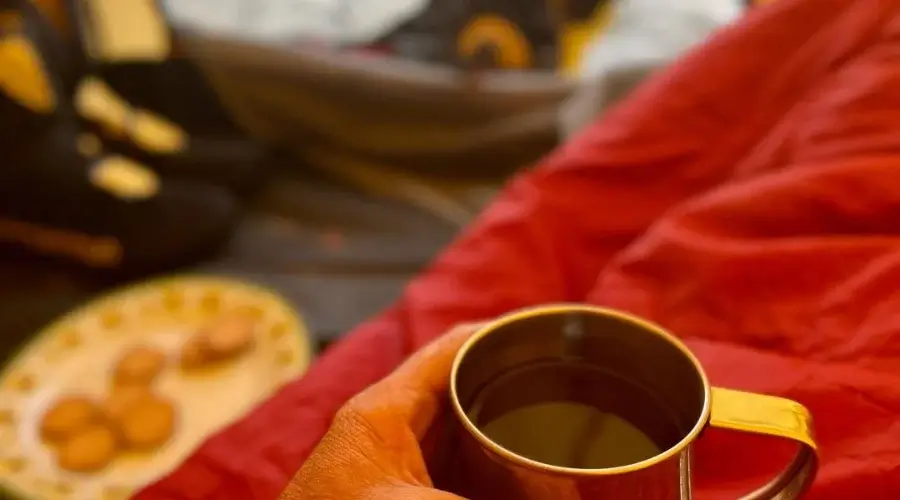
Thangnak | minimal structures with facilities
At 4,350 meters above sea level, Thangnak is an integral part of the entire ascent. Tea houses are the type of accommodation available here. They are characterized by minimal structures with facilities that cater to customers’ demands.
The accommodation is usually dormitory-style; however, hot showers or baths may be provided at an extra cost. The power supplied to the camp is mainly electrical through solar energy and hence is not constant, especially in the evening. Wi-Fi is generally out of the question this high up.
However, the tea houses offer a warm environment and delicious and healthy meals, which helps the trekkers get used to the high altitudes.
Khare | basic but clean rooms
Khare is on the Mera Peak climb route at an altitude of 5000 meters. The facilities are better here than at the lower stops, with tea houses providing rather basic but clean rooms and wash facilities.
Few tea houses may have minimal Wi-Fi and electricity, but the primary importance is to make the trekkers feel comfortable and safe at such high altitudes. It is also notable that only limited showers are supplied with hot water, and these are usually charged separately.
The few tea houses in Khare offer various meals, making it possible for the trekkers to be ready for the tasks ahead.
Mera Peak High Camp | Sleep in tents
High camp in Mera Peak trekking involves staying in a tent at around 5800m, making it a thrilling experience for the trekkers.
Like in many tea houses in the lower regions of the trek, the camping area at High Camp is a temporary setting so that the trekkers will sleep in tents instead of more permanent shelters. These have been provided to give hikers a form of shelter during the strenuous exercise of trying to get to Mera Peak.
Mera Peak climbing accommodation emphasizes as much rest as possible before the final climb. This area has no specific tea houses, so the trekkers are left with limited services provided by the trekking agency.
Trekkers’ meals are usually cooked by guides or cooks who accompany a group, focusing on energy-providing foods since the final approaches to the summit are ahead.
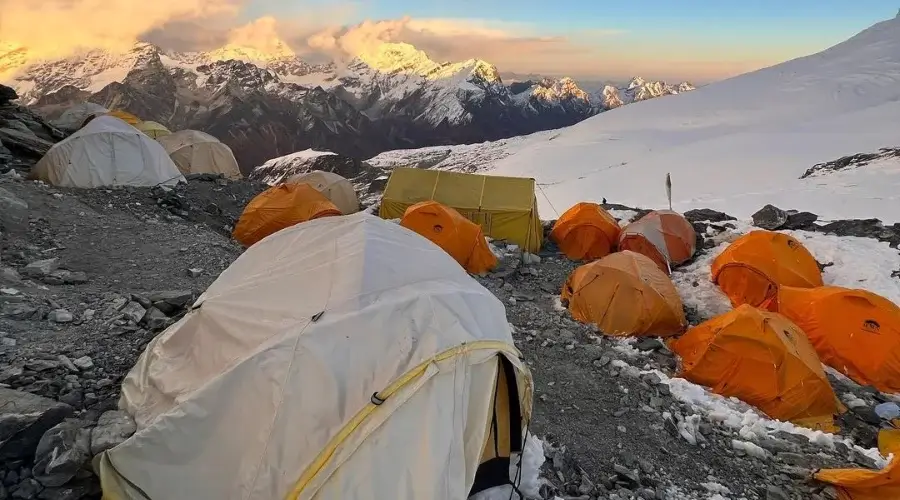
Occasionally, hot showers may not be possible because of the high altitude and the difficulty of boiling water at that level. However, if favourable circumstances exist, some trekking operators may let a hot wash for extra costs.
There is not much that one can do at the High Camp since the place is located at a very high altitude, and due to the extreme conditions, there are no other activities to do other than waiting to have a break and prepare for Mera Peak.
Thuli Kharka | minimal with limited
Thuli Kharka is at an altitude of 4,200 meters and is a gateway for Mera peak trekking. The village has simple tea houses, ensuring trekkers get necessities after a long day. As for lodging, one finds rather basic structures with several beds, where travellers can catch some sleep in expectation of the next day.
Facilities in Thuli Kharka are minimal, with limited electricity, making it essential for trekkers to bring their power sources or portable chargers for electronic devices. Wi-Fi is typically unavailable, allowing visitors to disconnect and enjoy the region’s natural beauty.
Hot showers are usually absent, but the tea houses offer meals to energize trekkers, often focusing on traditional Nepali dishes and familiar options for international visitors.
Lukla | basic tea houses to more comfortable lodges
Lukla, situated at approximately 2,800 meters, is an essential gateway to the Everest region and is often the starting point for treks to Mera Peak. This bustling town has various accommodations, from basic tea houses to more comfortable lodges, making it a convenient stop before and after the trek.
Lukla’s facilities are significantly better than those at higher altitudes, with many lodges offering Wi-Fi, hot showers, and reliable electricity.
Accommodation Costs and Additional Expenses
The accommodation cost for Mera Peak Climbing varies depending on the location and altitude. While staying in Kathmandu, the accommodation cost might range from $10 to $100 or even more.
But if you start trekking and move to a high altitude, accommodation is slightly cheaper than in Kathmandu. It will cost around $5 to $10 for the room only. Food, Wi-Fi, a hot shower, and charging might range from $2 to $10.
Tips for Choosing the Mera Peak Climbing Accommodation
1. Research and Reviews:
Look for the tea houses along the trail when planning the hike. Travel blogs, travel forums, and other sources can provide information about the experiences of other travellers, tourists, and trekkers.
2. Consider Location:
When booking a hotel or any other accommodation type, consider one close to the trekking trail. Doing that can add time differences, so if you have enough time and energy, you can remain close to the route and rest properly after a long day’s walk.
3. Check Amenities and Facilities:
Some basic facilities tourists should look for in tea houses include clean and comfortable beds, hot water showers, and dining places. Some areas also offer charging facilities for devices and clean drinking water, which is an added advantage.
4. Meal Options:
Make sure the tea house has many meal varieties, especially breakfast and dinner menus, available to clients. Good food is essential, especially when trekking, so people should get to areas where food satisfies their needs.
5. Ask for Recommendations:
You should be open to seeking accommodation independently. You can ask your local guides or other hikers for help or check TripAdvisor or Google review sites.
Food and Water During Mera Peak Climbing
At Lower Altitudes
The Mera Peak trek starts from lower elevations around the starting point. Local dining options in this area maintain culinary traditions that match Kathmandu cuisine.
Rice combined with lentils (dal) and vegetables and protein options of chicken or eggs create the typical hearty meals.
Alongside Nepalese foods in these areas, you can taste international dishes such as pasta while also enjoying pizza and pancakes.
Drinking water remains generally safe from taps and bottles so that you can rely on purification tablets as a backup precaution. You can also buy mineral water bottles in the lower altitudes.
During the Trek (Lukla to Mera Peak Base Camp)
The further your altitude rises, the more limited the food selection becomes. Your meals will primarily consist of rice, soup with potatoes and noodles accompanied by easy-to-digest meats.
Energetic meals help you sustain your power levels because they contain nutritious elements. Hot meals of porridge and dal bhat with rice serve as the primary food options in the tea houses and lodges throughout the trek, while tea or coffee provides warm beverages.
You can find limited fresh fruits between Mera Peak Base Camp and the summit, but dry fruits are regularly available. Natural springs alongside bottles of drinking water are available at the lodges.
To avoid water contamination, use boiled or bottled water from a clean source.
During the Climb (Base Camp to Summit)
The nature of food changes as you move from lower elevations to higher ones. From Mera Peak Base Camp and above, the food consists of nourishing meals that power your climb.
Easy-to-digest porridge is served alongside noodles, soup, and instant food products at meals. Cooks at camp will provide you with enough calories, but the available food choices might be basic.
This stage of the climb uses mostly lightweight foods to sustain energy without causing feelings of heaviness.
Water During the Climb
Water is the most crucial and essential part of the trek and climb. You will find enough drinking water during the trek, but you must be careful while drinking it. In the city areas, you will get enough mineral water bottles.
But for the trek, you must carry a water purification tablet or UV water sterilizer to make sure you drink purified water. Also, remember that once you start consuming purification tablets, you should drink more than 3 litres of water.
During the Mera peak climb, you must boil and drink the glacier water because the glacier water contains various contaminants that will degrade your health.
How Himalayan Masters Ensures the Best Stay & Food?
So, you must have got all the required information related to Mera Peak Lodges and meal. Please note that these all accommodation costs according to the each place is covered in the best Mera Peak Climbing Package provided by Himalayan Masters.
We also provide a -25 degrees Celsius sleeping bag which will help you accommodate at the higher altitudes with a warm insulation.
To make you trip more easier and healthy Himalayan Masters also provide water purification tablets and water bottle as a complimentary service which even helps to reduce the trip cost.
Our, Himalayan Masters, trek and climbing guide will make sure that you get the best accommodation and food during the Mera Peak Climbing. If you want more details about the trip then you can contact us via email: [email protected].
Want to know more?
Speak to an Expert





Sandip Dhungana
Nepal 🇳🇵
Whatsapp: +977-9823636377

